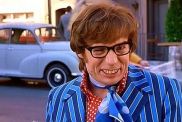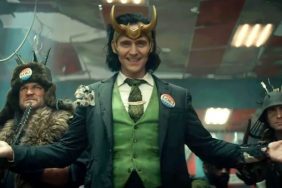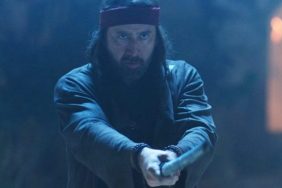WARNING: Spoilers ahead for Star Trek Into Darkness…
I had so many questions for Alex Kurtzman. The co-writer of Star Trek and Star Trek Into Darkness, alongside his frequent collaborator Roberto Orci and Damon Lindelof, has an awesome responsibility in bringing the world of the original series to the big screen, in an alternate timeline no less, and I wanted to get to the heart of some of the bigger decisions involved with the latest film, which hits DVD and Blu-ray today. Why save the villain’s name for the middle of the movie, when he’s already the most famous bad guy in the history of the franchise? Why was it so important to draw parallels between The Wrath of Khan and the events of Star Trek Into Darkness? If Khan’s blood can resurrect the dead, and Scotty has synthesized it, will it be standard-issue in med bays throughout the Federation? Was the Enterprise infested with tribbles after Scotty brought one back to life all willy-nilly?
These were the few questions I was able to cram into the short ten minutes in which Alex Kurtzman was available (except for the tribble one, I got cut off before we could get into that). Even then I wish we could have delved deeper. Whether you loved it or hated it, there’s a lot to explore in the creative process that brought Star Trek Into Darkness to life. I hope Kurtzman’s responses help illuminate the process a little bit for you. I’ll try to follow up in the future, but until then… live long and prosper.
CraveOnline: There’s a lot of Khan questions, as you can imagine. My first question is, why was it necessary or important to everyone to make Khan a mid-movie reveal?
Alex Kurtzman: Well, that’s an interesting question. We debated doing Khan at all. Obviously, when you think of Star Trek, Khan is the gold standard in villainy. He is the most beloved, I think by many, bad guy in Star Trek, and I think we count ourselves among those fans and so the question for us immediately became, “Alright, were taking on a serious weight by taking on Khan. Just by deciding to do Khan, some people will reject it outright and others will be excited by it and some will want to see where it goes.” I think in our first pass at the story, in our first conversation, we were thinking, “Let’s not do Khan. Let’s take him out of it. Let’s see if the story can exist without Khan.”
So, we knew we wanted to tell a story about a character who had corrupted the Federation from within and who may have put our two guys in the ultimate test of how they were going to do battle with this villain, while maintaining the standards of Starfleet, while also exploring their relationship and what it meant, since we did not want to assume that. From the beginning of the first film, Kirk and Spock were the friends that certainly we knew them to be in The Wrath of Khan. In The Wrath of Khan, Kirk and Spock had many adventures and that movie is very much about getting older and our Kirk and Spock are young, still. So, we were really debating how to do that and one of the things that we were trying to figure out was, “Okay, let’s say it’s not going to be Khan. Let’s just justify somebody new.”
As we started going through the story, this character started to emerge but it became more and more clear that ultimately, it was going to be a story about a test of their friendship. We always like to think of doing… We sort of set our world in an alternate timeline so that we could play in harmony with canon. There would be characters, there would be situations that you would find familiar but there would be things about them that were a little bit off, a little bit different. I think we started feeling strongly, as the story started evolving, that really what this was, was going to be a test of friendship between Kirk and Spock and a question of family and a question of crew as family. And suddenly, all the same things that Khan represented were there. So, we thought, “Okay, I guess we’re doing Khan.”
I think because there was such a microscope and so much speculation about whether or not we were doing Khan, I think we actually felt as viewers, we were going to be far more interested in the movie if that fact were held back for a while. So it wasn’t so much designed to trick people as it was designed to almost be like, when you do a murder mystery, you always deflect from the real killer onto five, six other characters. You focus on one, it must be that guy but then, at the eleventh hour, you realize it’s not and I think just at a narrative level, hiding the ball was really exciting to us and that’s ultimately why we ended up doing it.
Do you have the whole Star Trek universe to play with? Like, if you wanted to, could Q have been the villain in this movie or in any of the sequels?
Maybe, but it’s hard to say because I think every character has to be there for a reason and whoever it was, we weren’t about to just randomize our bad guy.
Oh, no that’s not what I meant. I’m just wondering… what’s in your toy box?
Oh, for the future you mean?
Yeah, or even potentially Star Trek Into Darkness. You said you hadn’t originally decided on Khan. I’m wondering, do you have villains from every Star Trek universe at your disposal or are you trying to keep this focused on the original series?
Well, we make references to “Next Generation.” In the new timeline, things have changed a little bit so we do have a fairly large toy box to play from but again, we’re never going to pick anything out of it at random and just throw it on the screen. I think there always has to be a reason for it.









